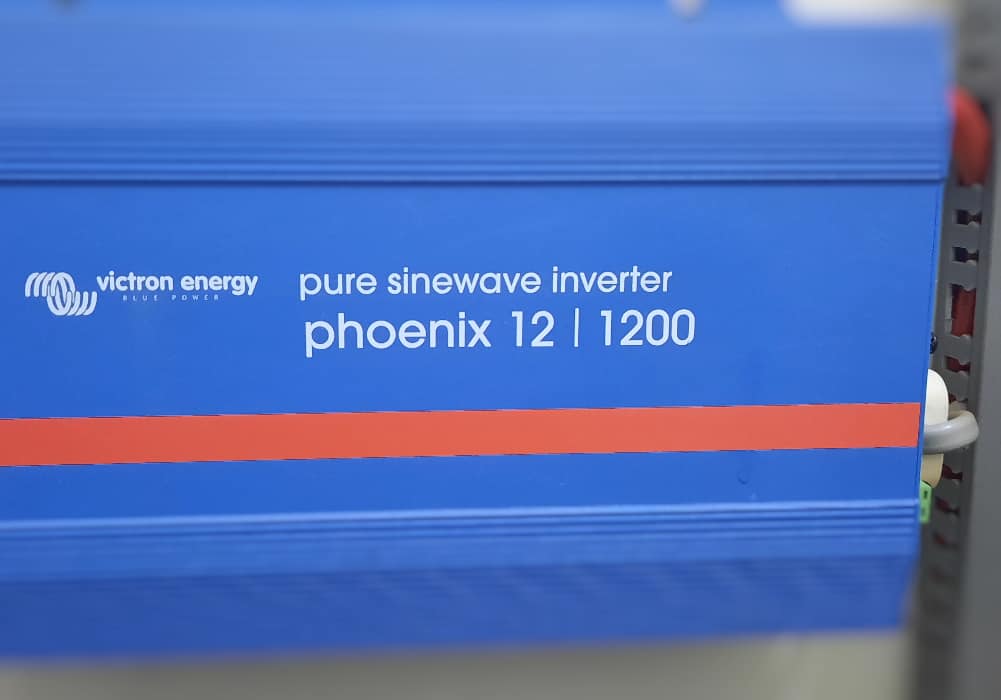Wondering how much of the battery power an inverter continues to draw even when no appliance is plugged in?
Over time, the impact of an inverter’s standby power draw can be more significant than more people realize.
A battery can be drained in a matter of days for example.
Read on to find out how much power an inverter continues drawing from the battery when on standby and the tips that you can use to minimize this power draw.
Does an Inverter Use Power with No Appliance Plugged in?
Yes, depending on the inverter capacity (watts), it can continue drawing as much as 2 -10 watts (estimate) when idle – no appliance is plugged in or switched on provided the inverter switch is on.
The actual power draw depends on the inverter model efficiency and power-saving features installed.
The Idle Power Draw of an Inverter (no-load)
There’s no one answer but some inverters when idle can draw as much as 1 amp or more at 12V, and 0.5 amps at 24V which works out to as much as 12 watts.
This power keeps the inverter’s internal circuits active.
Wondering about the impact on the battery capacity over time? Assuming a no-load draw of 1 amp, over a 24-hour period, the inverter uses up as much as 24Ah and can draw down a 100Ah battery to 50% of its capacity in about 4 days!
Check the technical specifications section of your inverter for its accurate no-load power consumption.
Indicative no load power consumption (W) for selected inverter capacities (W)
| No. | Inverter Model | Power rating (W) | No load power (W) | No load current (Amps) |
| 1 | Xantrex XPower | 300 | <2.4 | <0.2 |
| 2 | Xantrex XPower | 400 | <3.6 | <0.3 |
| 3 | Xantrex Prowatt SW | 600 | <7.2 | ~0.6 |
| 4 | Xantrex Prowatt SW | 1000 | <9.6 | ~0.8 |
| 5 | Xantrex Prowatt SW | 2000 | <9.6 | ~0.8 |
Does an Inverter Draw Power when Off?
An inverter will usually draw no power when off. That said, some inverters may continue drawing a few watts even when switched off.
You may be able to check this using a clamp on power meter to check for DC current/ power in the positive or negative inverter to the battery cable when the inverter is switched off.
Use an isolator switch to disconnect power to the inverter
You can install an isolator switch between the inverter and the battery to completely disconnect power from the battery.
Tips to Minimize Power Consumption
Concerned about the power draw of the inverter when no appliance is plugged into it? Here are a few tips that may help:
1. Switch off the inverter when no appliance is connected. This disconnects the internal inverter circuit from the battery.
If an inverter has a remote switch the better. It makes it so much easier to reduce power draw by switching the inverter off if it is installed several feet away from your living and working space such as in an RV.
2. Switch on the inverter power saving mode if it has one. Compared to switching off this is more convenient. You do not need to remember to switch it off.
The power-saving mode reduces an inverter’s idle power consumption by as much as 80%!
When the power saving mode is engaged, the inverter monitors the power consumption.
When the power draw drops to about 10 watts or less (depending on the inverter model or its settings), it periodically checks for a connected load and only when detected does it switch on thereby lowering its standby power draw considerably!
Related Topics
How Much Power an Inverter Draws when on Standby
An inverter can draw as much as 1 amp or more at 12V, and 0.5 amps at 24V when idle which works out to as much as 12 watts. This power keeps the inverter’s internal circuits active.
Check the technical specifications section of your inverter for its accurate no-load power consumption.
Does an Inverter Draw Power when not in Use?
Yes, an inverter can continue drawing power from the battery even when not in use provided it is switched on.
For this reason, switch it off or activate the power-saving mode of the inverter to reduce how much power it draws from the battery over time.
Closing Thoughts
An inverter can continue drawing power from the battery when on standby or idle provided it is switched on.
To stop the power draw, switch it off. You may need to install an isolator switch for some inverter models to completely switch them.
On some inverters, you can minimize the power draw when no appliance is plugged into the inverter by activating the power save mode (check if it has the feature).
Related Topics
How long a battery lasts with different appliances
How many amps does a 2000-watt inverter draw?
How to choose the right inverter for your application
For example, an inverter with a no load power consumption of 10W connected to a 12V, 100 Ah battery uses up 20Ah (20%) of the battery’s capacity over 24 hours.
How to reduce inverter no load power consumption
Do larger inverters draw more power?
Yes. Larger inverters generally consume more power compared to smaller rated inverters.
Take the Xantrex Prowatt SW 600W ‘s no load power consumption of about 7.2W (see table above). This is about 3 times more than XPower 300W’s 2.4W.
Select your inverter size such that its power rating is slightly more than the total combined power rating of loads connected to it.
Connecting too small a load to an inverter (compared to its power rating) reduces the overall efficiency of the inverter setup.
Inverters consume battery power even when no appliances are switched on. To reduce the no load power consumption, switch off the inverter or if it has an energy-saving mode, activate it.
